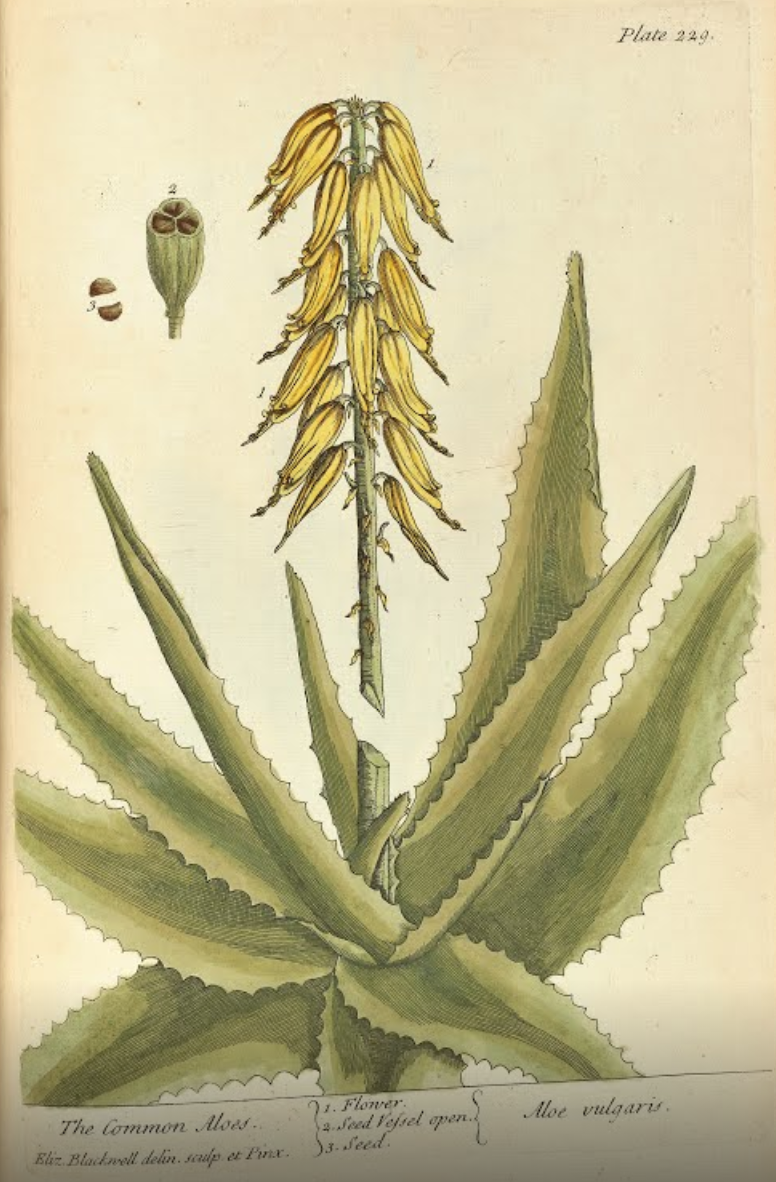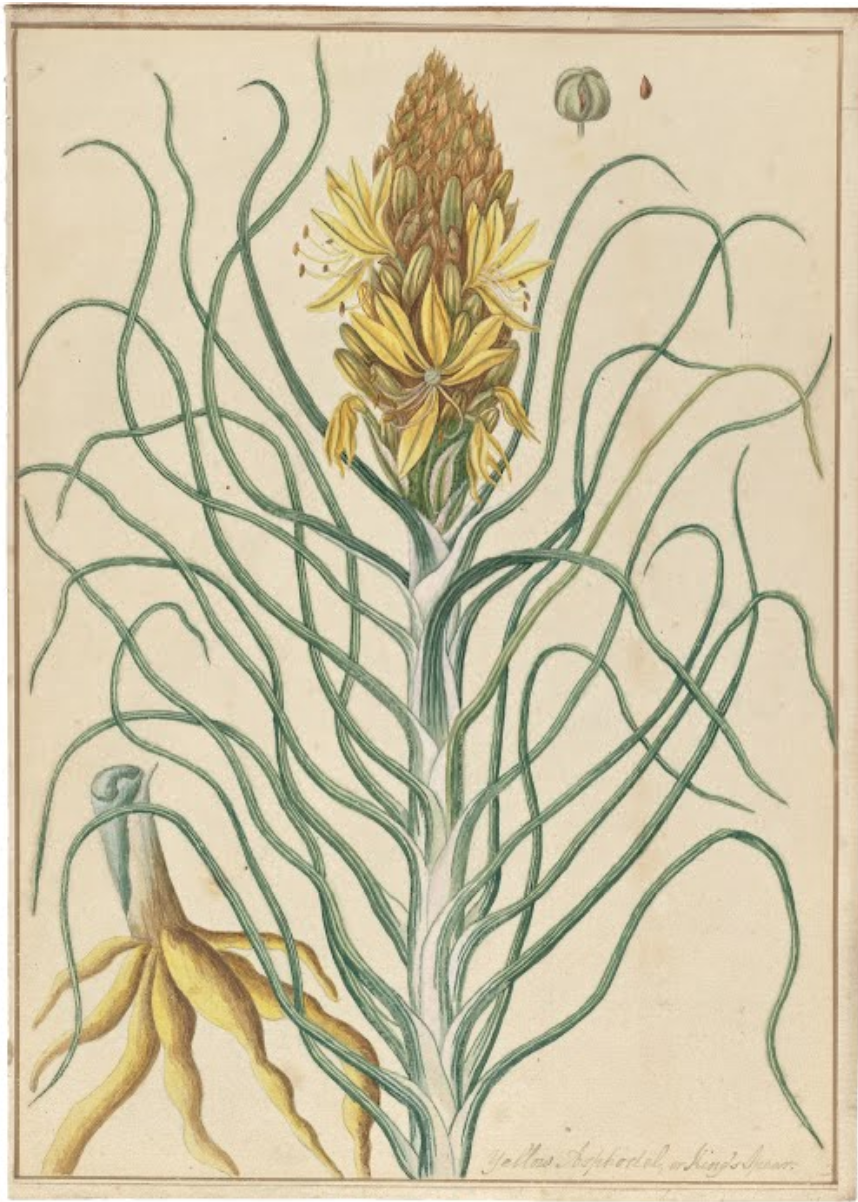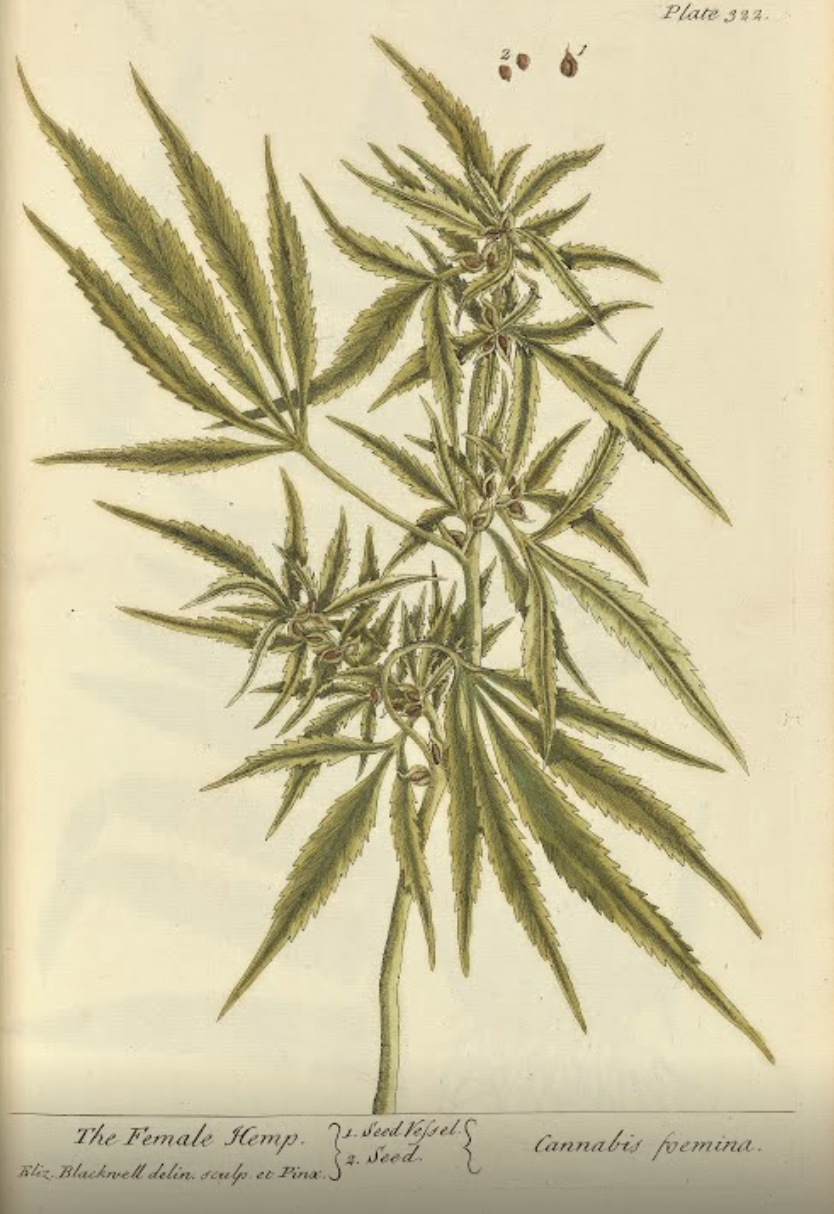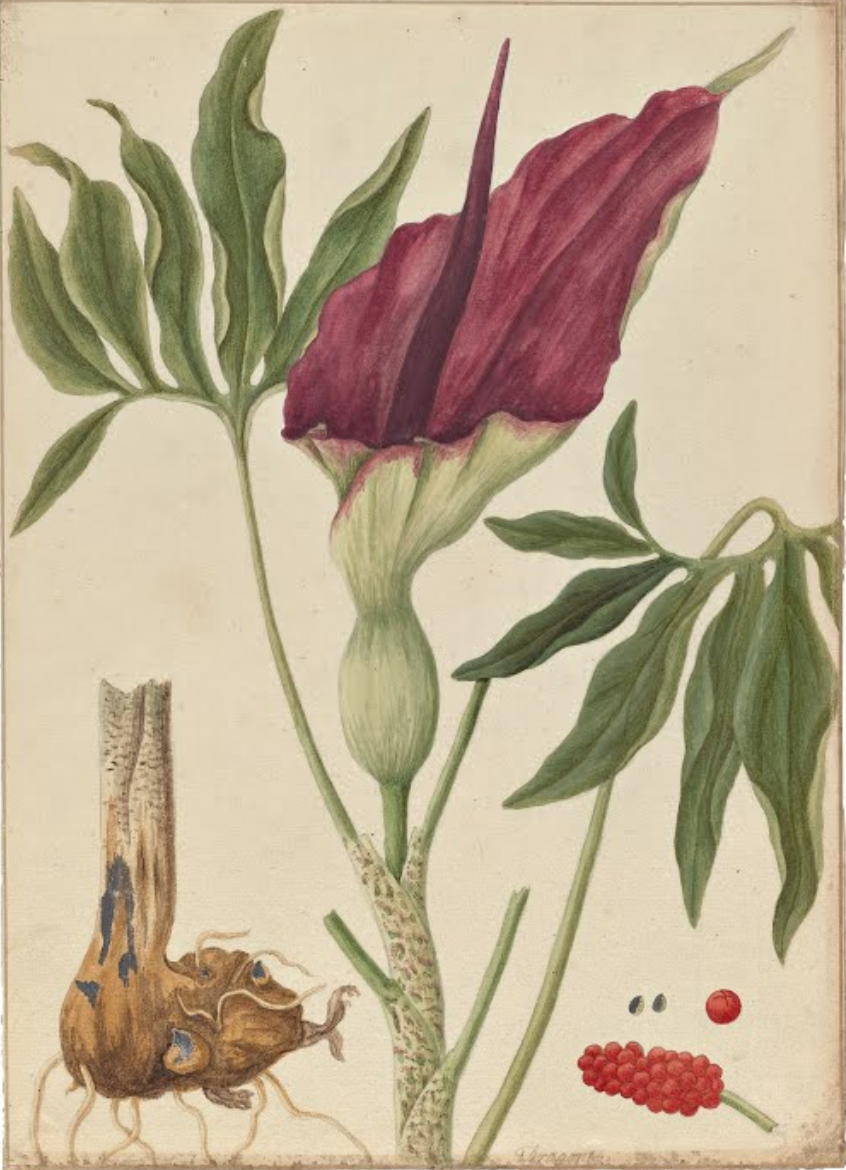Exploring A Curious Herbal
OSGF
Interesting researchers from all over the world are drawn to the Oak Spring Garden Library, and among them is Janet Tyson, a PhD candidate in history at Birkbeck, University of London.
Janet is one of our 2020 researchers in residence, and recently spent a couple weeks at Oak Spring working on her doctoral dissertation, which examines A Curious Herbal - an encyclopedia of of medicinal plants illustrated by 18th century Scottish botanical artist Elizabeth Blackwell - within the contexts of Georgian London and of similar books available at the time.
Janet, whose background is in art history and studio art, first became interested in researching A Curious Herbal after purchasing several prints from the book at an antique store in California. Her current research includes comparing existing copies of A Curious Herbal, two of which reside at the Oak Spring Garden Library.
Last week, Janet took a break from her work to chat with us about what she’s been learning during her time at OSGF.
Can you tell me about your research here at the Library?
Janet examines a copy of Pietro Andrea Mattioli’s Comentarii during a presentation she gave to OSGF staff.
JT: Well, the research topic is basically A Curious Herbal, which was something that Elizabeth Blackwell illustrated and she was the compiler, I guess you could say. . . it wasn't like she was the originator of the material, but she assembled the material.
. . .On one hand, there's practical information about herbs and where to find them and that sort of thing, but the idea was that, at least my idea is, it's basically like a picture book, with captions that have useful information in them. And then the pictures also help people to identify plants, and she focused on the parts of plants that have actual medical or medicinal value. So, unlike say, a flora, where you'd focus on the flowering parts of plants, she put in roots and bits and bobs that would have, at that time, been considered to have use.
At the time, was it unusual for a woman to illustrate and publish an herbal?
JT: Yes and no. There were a lot of women, as well as men, who domestically produced what would have been called recipe books, so that was a popular thing to do. Also, at the same time, botany was becoming recognized or categorized as an appropriate activity for women to engage with.
It sort of gathered more steam in the late 18th and into the 19th century, but you know, it was a way of learning about nature, which was something that a lot of people were becoming very enthusiastic about, and then it was something people could do at home or in their backyards. It kind of “kept women out of trouble,” and so it was something that was considered suitable for women, and at the same time, to produce a book that would be printed and published was a little unusual. There were publishers who went back and got hands on some of these old recipe books and printed them . . .but (A Curious Herbal) was something that was meant from the get-go to be sold.
What materials have you been looking at here at the library?
Janet points on the differences between the illustrations in several editions of A Curious Herbal during a presentation for OSGF staff.
JT: I have multiple aims, but they all get back to the herbal. There are two copies of A Curious Herbal here, so one of the things I want to do is compare the copies here to copies in other collections. Another thing I want to do is compare the herbal to some of the other prestige books that would have been available and published in London during that period, including Mark Catesby's Natural History of the Carolinas. And even though Maria Sibylla Merian wasn't British or working in London, her work was collected by people who were Blackwell’s patrons, so in all likelihood, she knew of Sibylla Merian's works. And then there are some other astonishing books in the collection here that pre-date the herbal, some of which probably informed the content of the herbal, but I don't know for certain.
In any case, one of the things I want to do is look at herbals that preceded publication of A Curious Herbal. I want to look at the ways that the imagery skews more towards being scientific or skews more towards being decorative.
Is there anything you’ve found in the library so far that has struck you as particularly interesting?
JT: Well, I don't know if I would say interesting - amazing, maybe! Probably the Matiolli . . . I think of everything I've seen, probably that's the one that really has stunned me. I mean there are others - (Leonardo Fuchs’ De Historia Stirpium) is a wonderful copy, and the Catesby could have been put together yesterday. The condition of these books is so good that really knocks me out.
Is there anything else you’d like to say about your work at the library?
JT: This has been an invaluable experience - I've been exposed to an awful lot of things here instead of chasing all over the place. To be able to be a resident and to just walk over to the library everyday and look at these things, and the way it works I can just ask for something and Tony's just able to get it - other libraries you have to wait an hour . . . you know, it's just very, very different. It's brilliant.
Want to learn more about Elizabeth Blackwell and A Curious Herbal? There are multiple digitized images of her work on our Google Arts and Culture page. To learn more about our opportunities for researchers, visit www.osgf.org/researchers.








